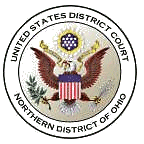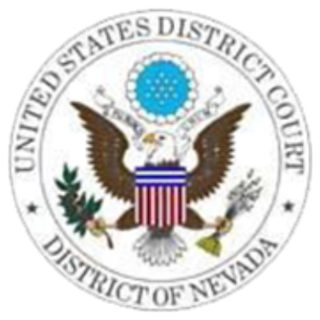A tax refund or tax rebate is a payment to the taxpayer due to the taxpayer having paid more tax than they owed.
Cheek v. United States, 498 U.S. 192 (1991), was a United States Supreme Court case in which the Court reversed the conviction of John L. Cheek, a tax protester, for willful failure to file tax returns and tax evasion. The Court held that an actual good-faith belief that one is not violating the tax law, based on a misunderstanding caused by the complexity of the tax law, negates willfulness, even if that belief is irrational or unreasonable. The Court also ruled that an actual belief that the tax law is invalid or unconstitutional is not a good faith belief based on a misunderstanding caused by the complexity of the tax law, and is not a defense.
A tax protester, in the United States, is a person who denies that he or she owes a tax based on the belief that the Constitution of the United States, statutes, or regulations do not empower the government to impose, assess or collect the tax. The tax protester may have no dispute with how the government spends its revenue. This differentiates a tax protester from a tax resister, who seeks to avoid paying a tax because the tax is being used for purposes with which the resister takes issue.
North American Oil Consolidated v. Burnet, 286 U.S. 417 (1932), was a landmark decision by the United States Supreme Court that established the claim of right doctrine.

Cesarini v. United States, 296 F. Supp. 3, is a historic case decided by the U.S. District Court for the Northern District of Ohio, where the court ruled that treasure trove property is included in gross income for the tax year when it was discovered. The case is frequently cited in American law school textbooks as an example of the nuances of income taxation.
Arrowsmith v. Commissioner, 344 U.S. 6 (1952), is a United States Supreme Court case regarding taxation. The case involves taxpayers who liquidated a corporation in 1937. The taxpayers (properly) reported the income from the liquidation as long-term capital gains, thus obtaining a preferential tax rate. Subsequent to the liquidation in 1944, the taxpayers were required to pay a judgment arising from the affairs of the liquidated corporation. The taxpayers classified this payment as an ordinary business loss, which would allow them to take a greater deduction for the loss than would be permitted for a capital loss.
Burnet v. Logan, 283 U.S. 404 (1931), was a case before the United States Supreme Court.
In the tax law of the United States the claim of right doctrine causes a taxpayer to recognize income if they receive the income even though they do not have a fixed right to the income. For the income to qualify as being received there must be a receipt of cash or property that ordinarily constitutes income rather than loans or gifts or deposits that are returnable, the taxpayer needs unlimited control on the use or disposition of the funds, and the taxpayer must hold and treat the income as its own. This law is largely created by the courts, but some aspects have been codified into the Internal Revenue Code.
Commissioner v. Banks, 543 U.S. 426 (2005), together with Commissioner v. Banaitis, was a case decided before the Supreme Court of the United States, dealing with the issue of whether the portion of a money judgment or settlement paid to a taxpayer's attorney under a contingent-fee agreement is income to the taxpayer for federal income tax purposes. The Supreme Court held when a taxpayer's recovery constitutes income, the taxpayer's income includes the portion of the recovery paid to the attorney as a contingent fee. Employment cases are an exception to this Supreme Court ruling because of the Civil Rights Tax Relief in the American Jobs Creation Act of 2004. The Civil Rights Tax Relief amended Internal Revenue Code § 62(a) to permit taxpayers to subtract attorney's fees from gross income in arriving at adjusted gross income.

Baxter v. United States, 633 F. Supp. 912, was a federal tax refund case, decided in 1986, regarding the U.S. federal income tax treatment of the gambling income of a professional gambler. Because of this case, gambling winnings in the United States can in certain cases be treated as business income for federal income tax purposes. This means that in some cases expenses and losses can be deducted from gambling winnings in arriving at the net earnings from self-employment, and that winnings can be placed into retirement funds.
United States v. Jordan, 113 U.S. 418 (1885), was a Supreme Court of the United States case regarding an Act of Congress that involved tax refunds. Specifically, it provided for the refunding to the persons therein named of the amount of taxes assessed upon and collected from them contrary to the provisions of the regulations therein mentioned. In other words, pay to each of such persons the sum set opposite his name, each of them is entitled to be paid the whole of that sum, and no discretion is vested in the Secretary of the Treasury or in any court to determine whether the sum specified was or was not the amount of a tax assessed contrary to the provisions of such regulations.
Tax protesters in the United States advance a number of constitutional arguments asserting that the imposition, assessment and collection of the federal income tax violates the United States Constitution. These kinds of arguments, though related to, are distinguished from statutory and administrative arguments, which presuppose the constitutionality of the income tax, as well as from general conspiracy arguments, which are based upon the proposition that the three branches of the federal government are involved together in a deliberate, on-going campaign of deception for the purpose of defrauding individuals or entities of their wealth or profits. Although constitutional challenges to U.S. tax laws are frequently directed towards the validity and effect of the Sixteenth Amendment, assertions that the income tax violates various other provisions of the Constitution have been made as well.
A tax protester is someone who refuses to pay a tax claiming that the tax laws are unconstitutional or otherwise invalid. Tax protesters are different from tax resisters, who refuse to pay taxes as a protest against a government or its policies, or a moral opposition to taxation in general, not out of a belief that the tax law itself is invalid. The United States has a large and organized culture of people who espouse such theories. Tax protesters also exist in other countries.
Dobson v. Commissioner, 320 U.S. 489 (1943), was a United States Supreme Court case related to income tax.

Early v. Commissioner, 445 F.2d 166 was a United States income tax case, holding that an agreement between taxpayers and heirs of decedent—pursuant to which taxpayers received a joint life interest in income from the trust estate in return for the surrender of stock allegedly given to them by the decedent—was actually a compromise of the taxpayers' disputed right to the stock, and since they claimed the stock as donees, they were to be treated as having acquired their life estate in that capacity for federal income tax purposes.
United States v. Kaiser, 363 U.S. 299 (1960), was an income tax case before the United States Supreme Court.
American Automobile Association v. United States, 367 U.S. 687 (1961), was an income tax case before the United States Supreme Court.
Flora v. United States, 357 U.S. 63 (1958), affirmed on rehearing, 362 U.S. 145 (1960), was a case in which the Supreme Court of the United States held that a taxpayer generally must pay the full amount of an income tax deficiency assessed by the Commissioner of Internal Revenue before he may challenge its correctness by a suit in a federal district court for refund under 28 U.S.C. § 1346(a)(1). The Supreme Court agreed with the Commissioner of Internal Revenue, stating that the full payment rule requires the entire amount of an asserted deficiency to be paid before a refund suit may be maintained.
Comptroller of the Treasury of Maryland v. Wynne, 575 U.S. 542 (2015), is a 2015 U.S. Supreme Court decision that applied the Dormant Commerce Clause doctrine to Maryland's personal income tax scheme and found that the failure to provide a full credit for income taxes paid to other states was unconstitutional.
Davis v. Michigan Department of Treasury, 489 U.S. 803 (1989), is a case in the Supreme Court of the United States holding that states may not tax federal pensions if they exempt their own state pensions from taxation. In the 1930s, the federal and state governments began to charge income tax on salaries paid to each other's employees. However, reciprocal treatment was required under the doctrine of intergovernmental immunity. The Court's ruling extended the reciprocity to pensions, since they are a form of deferred compensation for services previously rendered by an employee.



